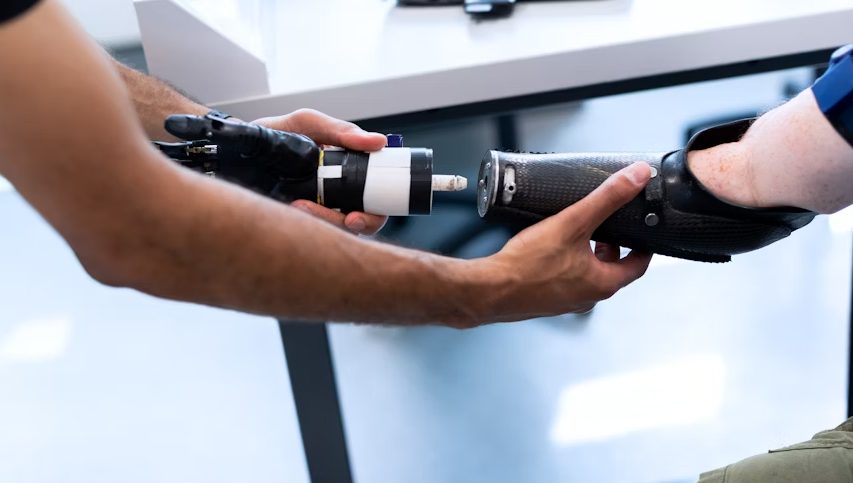
@ShahidNShah


The use of titanium in the medical field has become increasingly popular — in regard to the titanium medical tubing market (on a global scale), projections indicate a “market valuation” of $1.5 billion on a global scale, a press release from Strategic Revenue Insights Inc. highlights. With advantages in strength and biocompatibility, titanium has led the way in regard to great medical innovations. While it has long served as a solution for dental implants, an osseointegration (or bone-anchored) approach has brought to light an innovative and beneficial solution for lower-limb amputees.
The strength, corrosion resistance, and general biocompatibility of titanium make the material ideal for a variety of applications in the medical field, including uses in cardiac devices (like pacemakers) and in joint replacement. The material has also made strides in applications like prosthetics, especially when coupled with innovative techniques. For context, there are over 2.3 million individuals living with limb loss in the United States, the Amputee Coalition highlights, a figure that underlines just how prevalent limb loss is today. In terms of medical innovation, a 2025 article from UT Southwestern Medical Center points out that bone-anchored prosthesis surgery (osseointegration) is just one advanced technique that takes a page from dental implants, in which the use of bone-fused titanium was developed back in the 1960s.
In a prosthetic application via osseointegration, the use of titanium enables a prosthetic to be attached to a metal piece, which protrudes from the patient’s remaining stump. This contrasts greatly from a traditional prosthetic, which is generally worn in a completely external fashion. According to Jonathan Cheng, M.D. and a professor of plastic surgery at UT Southwestern, the use of titanium in bone-anchored prosthesis surgery involves the treatment of the surface of the titanium medical implants themselves. This unique process is key, as it enables a patient’s bone to “grow onto and into the implant, allowing it to gradually become part of the body,” the article states. Cheng points out that this provides “more natural attachment and control,” for patients, which can in turn increase their movement.
Titanium in osseointegration prosthetics is not a new concept. While it was based on the use of the material in dental implants, research highlights the fact that the first successful transcutaneous limb osseointegration took place back in 1990, while titanium was originally investigated as a biocompatible material in the 1940s. Nevertheless, the concept continues to evolve and is becoming a mainstream procedure as time goes on. As such, the use of titanium in the medical field requires a robust titanium metal supply for innovators and those in the medical field alike, making a high quality and reliable supplier a necessity. The increase in popularity and versatile uses of titanium across a variety of medical procedures fueled by the material’s unique benefits only underline the importance of the right, reputable supplier of commercial titanium — especially as approaches merge with newer technologies.
A 2025 article from the Smithsonian Magazine by Amber X. Chen specifically showcases a new ‘bionic knee’ for lower leg amputees that incorporates the use of titanium, coupled with robotic technology. Developed by researchers and scientists at MIT, the prosthesis is on par with a typical osseointegration approach as it connects directly to an amputee’s bone. However, the new rendition is combined with the use of a titanium rod as well as wires implanted in the muscle tissue, which are then “routed” to an “external robotic controller that helps move the prosthesis,” the article explains. Chen’s article highlights Tony Shu, the lead author of the study, who describes the prosthetic’s build in a “layered” sequence — while the first layer takes place on a neuromuscular degree, the second layer involves the incorporation of a titanium rod into the amputee’s bone, which works to provide better weight support as well as comfort for the patient. The third layer consists of the robotic limb, which is attached to the titanium implant. Shu goes on to point out that this approach also enables patients to “upgrade” to a newer robotic limb in the future. When coupled with the traditional benefits associated with a robotic limb (such as heightened movement), this ‘swappable’ benefit only adds to the value of the osseointegration approach.
It’s imperative to recognize that the benefits of osseointegration in lower-limb prosthetic application extend beyond the technique itself. For starters, the concept can help an amputee feel more in-tune with their prosthetic, which can help elevate comfort in a unique way. Phantom limb pain, for example, has long been a prominent issue for amputees, as it evokes a real pain sensation where the limb would be. While osseointegration doesn’t completely eliminate phantom limb pain, one AOFE Clinics article notes that it can reduce phantom limb pain through a variety of factors. This includes aspects like better sensory feedback and enhanced mobility (as well as control), which are often seen with an osseointegration approach. Osseointegration also rids a patient of the traditional prosthetic challenge of socket-related discomfort, which makes things more comfortable.
It’s important to note that while osseointegration can bring greater comfort in terms of the reduced potential for phantom limb pain, it can also minimize other challenges typically seen with traditional prosthetic solutions. This includes sores, pressure, chafing, and the discomfort that often comes along with basic body functions like sweating, all of which can make a traditional prosthetic far more uncomfortable to wear and use. Due to the direct ‘skeletal’ connection of a bone-anchored solution, a patient is able to enjoy a better relationship with their prosthetic and reap the benefits that come along with better mobility, all of which can contribute to a better quality of life.
Titanium has been the foundation of several medical innovations, enabling amputees to live fuller, more comfortable lives. With innovative concepts that incorporate the use of titanium, a lower limb prosthetic can effectively become a part of the patient, enabling them to gain back a greater range of movement and elevated comfort.

Patients in a medical choice situation are usually confused by the volume of information provided to them. Technical jargon, strange steps, and complex descriptions may cause confusion in people …
Posted Oct 5, 2025 Patient Experience
Connecting innovation decision makers to authoritative information, institutions, people and insights.
Medigy accurately delivers healthcare and technology information, news and insight from around the world.
Medigy surfaces the world's best crowdsourced health tech offerings with social interactions and peer reviews.
© 2025 Netspective Foundation, Inc. All Rights Reserved.
Built on Dec 10, 2025 at 1:15pm